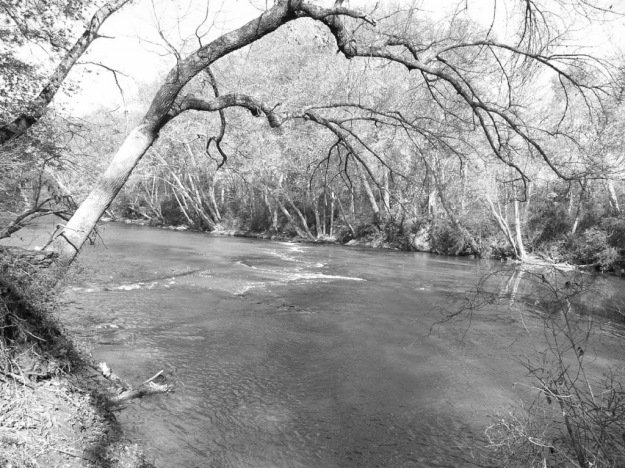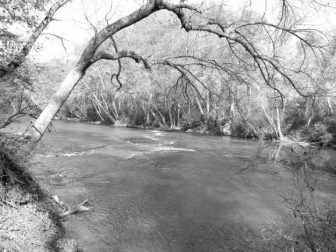Research continues on an incident that allegedly occured in Marion County Alabama. While reviewing archives at the Library Of Congress, this interesting article was found which was printed in “The Hickman Courier” in Hickman Kentucky on August 28, 1885. The article is a reprint of an article printed in the “Pulaski Citizen,” a newspaper in Pulaski Tennessee. The article(s) tell of the finding of “The Long Lost Ark of the Covenant” in Marion County Alabama.
Evidently the article was republished around the country. As you will see, “The Letter To The Editor” comes from a reader in Tupelo, Mississippi to the “Nashville American” which received it from the “Patriot Newspaper” in Harrisburg, Pennsylvania.
The article was of no help in our research but it is a good read. I highlighted in red a most enjoyable paragraph for your enjoyment.
Terry
A WONDER VERIFIED
The Long Lost Ark of the Covenant. From the Pulaski Citizen.
Buttahatchie River: The Buttahatchee River rises in northwestern Winston County, Alabama, near the town of Delmar, and flows generally westwardly through Marion County, where it collects a short tributary, the West Branch Buttahatchee River. At 1q, the river turns to the southwest and flows through Lamar County, Alabama and Monroe County, Mississippi; its lower reach is used to define part of the boundary between Monroe and Lowndes Counties. The Buttahatchee joins the Tombigbee near Columbus Air Force Base, 12 mi north-northwest of Columbus.
The readers of the Citizen will read an article that appeared in the Nashville American last Friday, which we copy below, headed “The Cave of Buddahattachie in which a most incredible tale of finding a small box and three petrified human bodies in a cave in Marion county, Ala., was told. The discovery was so wonderfully strange and the supposed contents of the box so marvelous that, while it impressed the more thoughtful with the possibility of its truthfulness, there is little credence given it by the average reader, doubtless from the fact that the people and the press have been so frequently imposed upon by unmitigated liars and unprincipled writers in a manner which is shameful and outrageous. It is the privilege of the Citizen to give to its readers further evidence in regard to this miraculous and to corroborate as herein given the truthfulness of the story as published in the American.
We give the American’s article: TUPELO, MISS., Aug. 4,1885.- In coming to Hamilton, the shire town of Marion County, The other day, I was reliably informed and greatly interested in a wonderful discovery recently made by one of the citizens of the county, Mr. J. W. Hadden. A few days since, while out hunting, Mr. Hadden saw in a cluster of bushes a snow-white fawn which he approached, hoping to capture a prize. The fawn almost allowed him to pick it up, when it suddenly run off a short distance and again stopped. Hadden again approached, when the fawn again retreated. This course was pursued by Hadden and the fawn until they reached a high bluff overlooking Buddahatchie river, some four miles east of Pearce’s Mills, when the fawn suddenly disappeared over the edge of the bluff. Upon coming up, Hadden peered over the bluff, when to his astonishment he saw the fawn standing on a narrow bench, hundreds of feet below, near the root of a large spruce pine recently blown up. After much difficulty he succeeded in reaching the spot where the fawn was last seen, but the fawn was not in the range of his vision.
Upon looking around he discovered that the pine in being uprooted disclosed to view a circular orifice in the bluff some three feet in diameter. Prompted by curiosity and a desire to catch the fawn, he provided himself with a torch and entered the cavern, and made a discovery that will not only immortalize himself and be a source of fabulous wealth, but will be of immense value and interest to the scientific men and biblical scholars of the world. Stretched out at full length upon the cave’s rocky floor, lay the petrified bodies of three human beings, two males and one female – an oblong box, of curious and antique design, two feet long, eighteen inches wide and sixteen inches deep, besides many other curiosities of smaller dimensions. Surprised Hadden withdrew from the cavern and returned to his home.
The next day Hadden returned with a trusted friend to the scene of his discoveries and removed the petrified bodies and other articles from the cave. The box, also petrified, was carefully moved from its resting place and broken, and found to contain a small earthen jar, a large roll of parchment and a brass rod.
Now, the mystery is, to what race of people did these bodies belong and how came them there? The parchment manuscripts are undoubtedly written in the Hebrew language. Many theories have been advanced by our people, but the most plausible one that I have heard is that the bodies are of Hebrew origin, that the box is the long-lost ark of the covenant, the rod the veritable Aaron’s, the jar the pot of manna and the parchment manuscripts the seven lost books of the Old Testament.
The scene of this wonderful discovery is one of sublime and picturesque grandeur. Hundreds of feet above huge masses of rock lift their hoary heads high in the air, while far beneath are the limpid waters of the Buddahatchie on their way to the gulf, “gurgling kisses to the pebbled shore. Mr. Hadden has carefully boxed his treasures and will start immediately for Washington, D. C where he will deposit them in the Smithsonian Institution. – Now, Mr. Editor, this wonderful discovery is no “Joe Mulhattan yarn,” but can be fully substantiated by calling on or addressing the following parties of Hamilton, Ala.: J. C. Hamilton judge probate court, Maj. James H. Gast, editor Marion County Herald, and Col. James Pearce, on whose plantation the wonderful discovery was made. J. W. S.
A WONDERFUL CAVE
THE REMARKABLE STORY OF A COMMERCIAL TRAVELLER
A Tupelo, Miss, letter to the Nashville Banner says:
In coming to Hamilton, the shire town of Marion County, The other day, I was reliably informed and greatly interested in a wonderful discovery recently made by one of the citizens of the county, Mr. J. W. Hadden. A few days since, while out hunting, Mr. Hadden saw in a cluster of bushes a snow-white fawn which he approached, hoping to capture a prize. The fawn almost allowed him to pick it up, when it suddenly run off a short distance and again stopped. Hadden again approached, when the fawn again retreated. This course was pursued by Hadden and the fawn until they reached a high bluff overlooking Buddahatchie river, some four miles east of Pearce’s Mills, when the fawn suddenly disappeared over the edge of the bluff. Upon coming up, Hadden peered over the bluff, when to his astonishment he saw the fawn standing on a narrow bench, hundreds of feet below, near the root of a large spruce pine recently blown up. After much difficulty he succeeded in reaching the spot where the fawn was last seen, but the fawn was not in the range of his vision.
Upon looking around he discovered that the pine in being uprooted disclosed to view a circular orifice in the bluff some three feet in diameter. Prompted by curiosity and a desire to catch the fawn, he provided himself with a torch and entered the cavern, and made a discovery that will not only immortalize himself and be a source of fabulous wealth, but will be of immense value and interest to the scientific men and biblical scholars of the world. Stretched out at full length upon the cave’s rocky floor, lay the petrified bodies of three human beings, two males and one female – an oblong box, of curious and antique design, two feet long, eighteen inches wide and sixteen inches deep, besides many other curiosities of smaller dimensions. Surprised Hadden withdrew from the cavern and returned to his home.
The next day Hadden returned with a trusted friend to the scene of his discoveries and removed the petrified bodies and other articles from the cave. The box, also petrified, was carefully moved from its resting place and broken, and found to contain a small earthen jar, a large roll of parchment and a brass rod.
Now, the mystery is, to what race of people did these bodies belong and how came them there? The parchment manuscripts are undoubtedly written in the Hebrew language. Many theories have been advanced by our people, but the most plausible one that I have heard is that the bodies are of Hebrew origin, that the box is the long-lost ark of the covenant, the rod the veritable Aaron’s, the jar the pot of manna and the parchment manuscripts the seven lost books of the Old Testament.
The scene of this wonderful discovery is one of sublime and picturesque grandeur. Hundreds of feet above huge masses of rock lift their hoary heads high in the air, while far beneath are the limpid waters of the Buddahatchie on their way to the gulf, “gurgling kisses to the pebbled shore. Mr. Hadden has carefully boxed his treasures and will start immediately for Washington, D. C where he will deposit them in the Smithsonian Institution. – Now, Mr. Editor, this wonderful discovery is no “Joe Mulhattan yarn,” but can be fully substantiated by calling on or addressing the following parties of Hamilton, Ala.: J. C. Hamilton judge probate court, Maj. James H. Gast, editor Marion County Herald, and Col. James Pearce, on whose plantation the wonderful discovery was made. J. W. S.
Source: Thursday, August 27, 1885 Patriot Newspaper (Harrisburg, Pennsylvania) ; page: 3


I would like this history